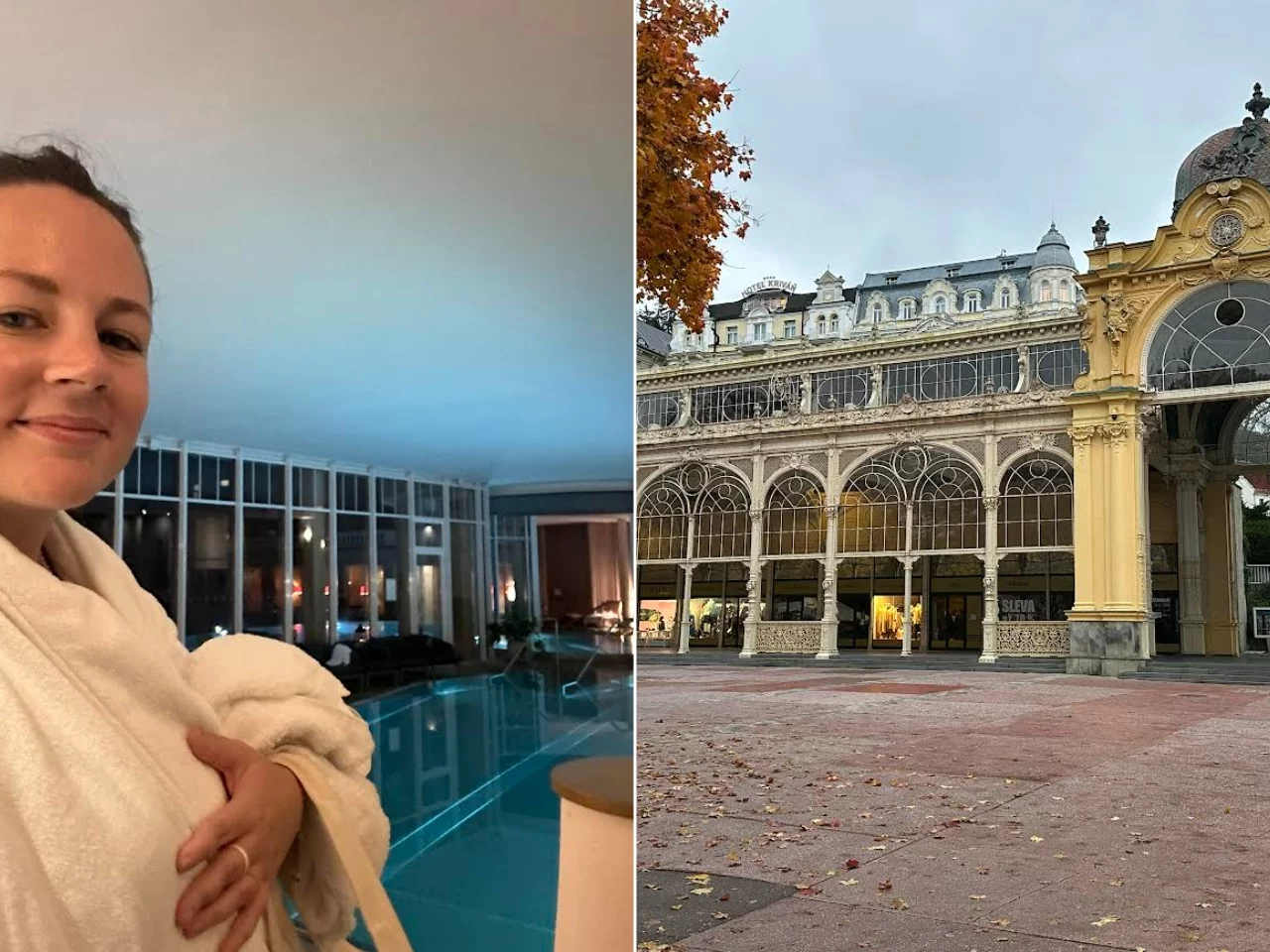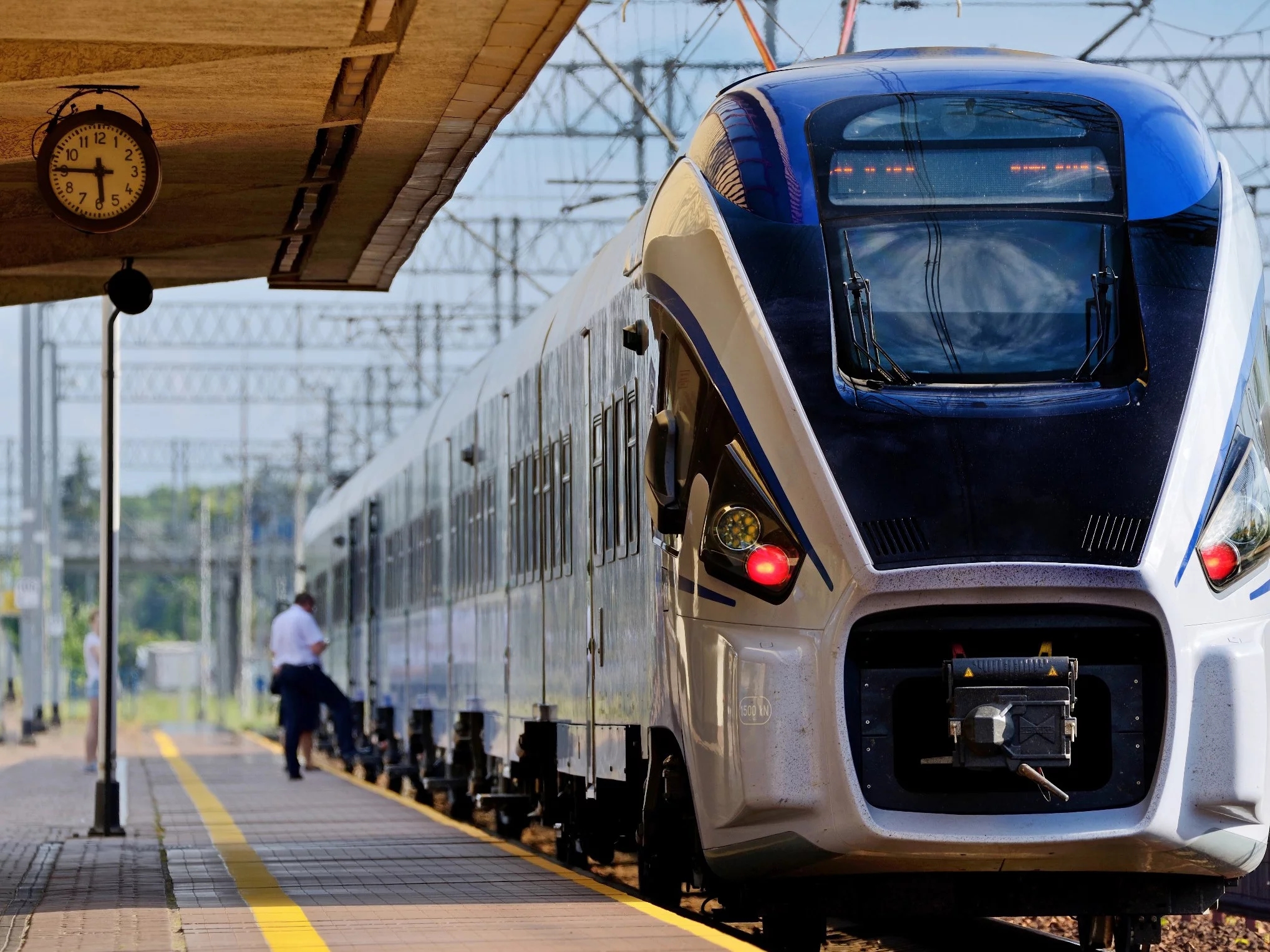I visited Europe's most famous spa towns. Hot springs, colonnades, and golden autumn.
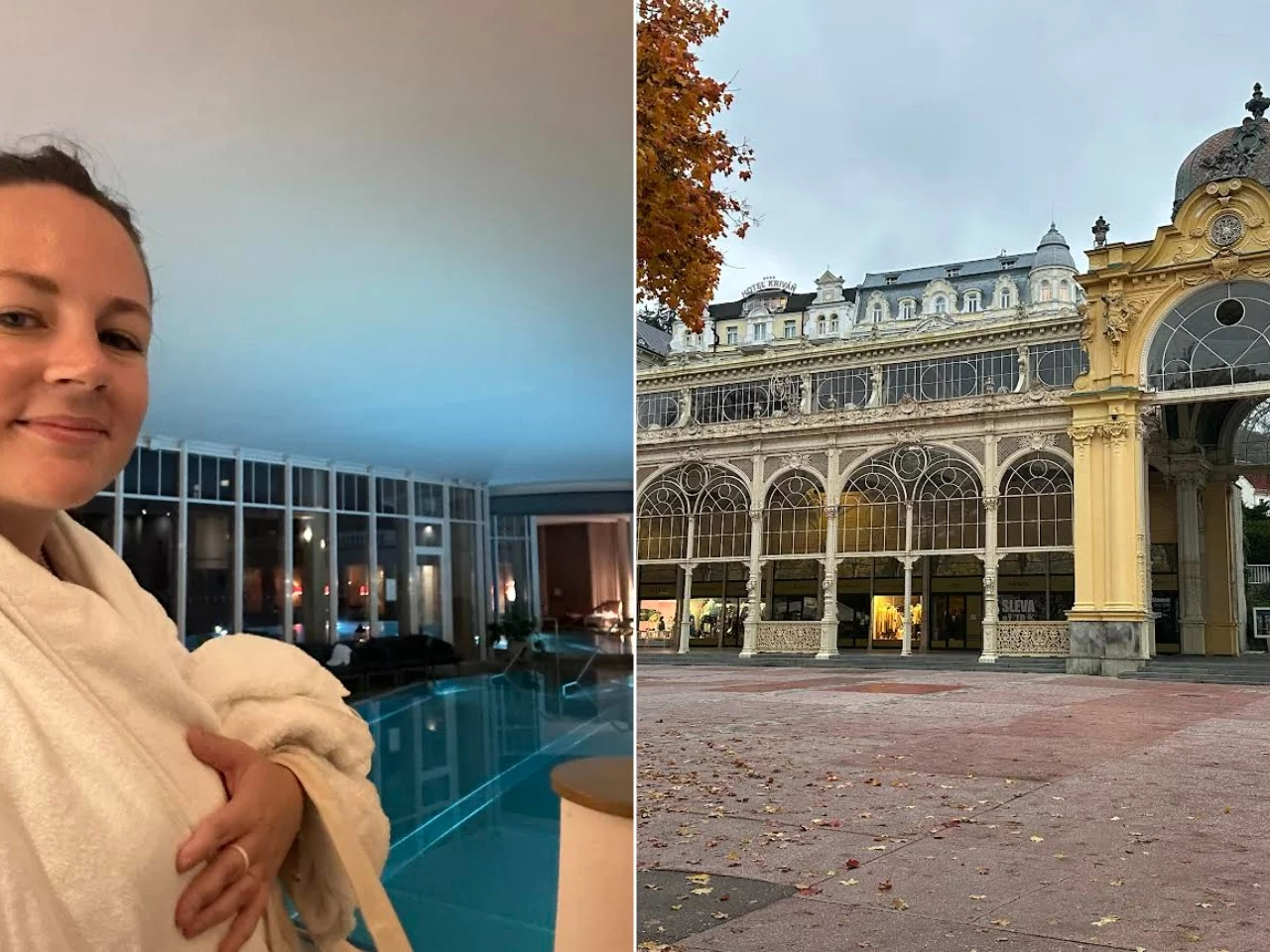
When planning a trip to a spa, you can look beyond Ciechocinek, Rymanów-Zdrój, or Kołobrzeg. Many Poles dream of such an opportunity, and some are still unsure whether it's worth it. Sometimes we're unaware of the gems waiting for us abroad, their unique atmosphere, completely different from that in our own country. I'm not judging whether it's better or worse. It's definitely different.
I hadn't heard much about the famous region of Western Bohemia before. Eventually, I found myself in the Karlovy Vary Region – Mariánské Lázně, Františkovy Lázně, and Karlovy Vary . Images like those from works of art or films were etched in my mind's eye. I feel like they're absolutely impossible to erase, certainly not as easily as from a smartphone. Thankfully.
The autumnal aura gave this visit a unique character right from the start. The golden season appears much sooner there than in Poland, or at least in Warsaw. Here, outside the window, I can still see green leaves, with only a few slightly changing color. There, one could observe trees with red, orange, and brown crowns.
In an instant, I stopped worrying about whether it would be cold. Nor did I worry too much about the lack of sunshine. The gray weather was overshadowed by the other charms and attractions of Europe's most famous spa towns. The air was fresh, the silence was soothing, and the architecture was astonishing. This was just the beginning.You won't find better spas in the Czech Republic
Let me start by explaining exactly what I'm talking about. There are countless spa towns in the Czech Republic, from Moravia to the Krkonoše Mountains, all the way to the Karlovy Vary Region. The latter is home to the most valuable and considered the oldest spa towns in the country. One boasts 16 hot springs, the warmest of which reaches 72°C! Another boasts fifty cold springs. Each one helps treat specific ailments and benefits not only seniors.
Both Karlovy Vary and Marianske Lazne and Františkovy Lázně have been on the UNESCO World Heritage List since 2021. They are also part of a group of eleven European spa towns collectively known as the "Great Spa Towns of Europe."
Tourists can expect thermal baths, top-class hotels, green spaces, and meticulously maintained building facades. Importantly, royal families, heads of state, and distinguished artists, including Goethe, Beethoven, Chopin, Bach, Mozart, and Mickiewicz , have visited the city. This is all thanks to the city's history, which dates back to the 14th century.
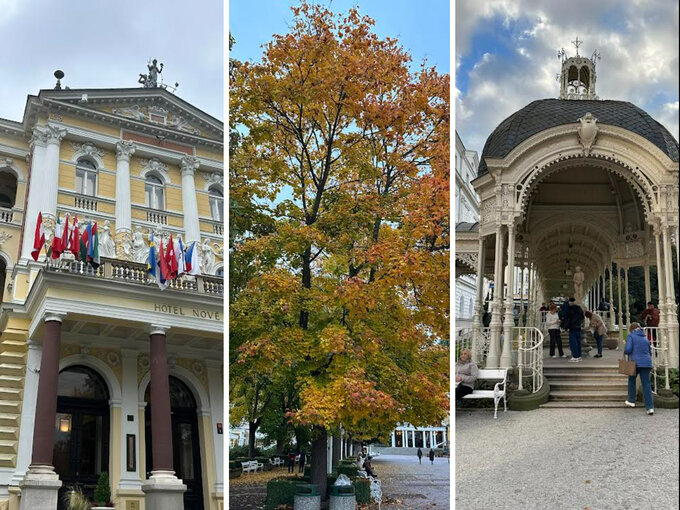
Mariánské Lázně was the first of the Czech Tricity towns I visited. In Poland, you can count on Gdynia, Sopot, and Gdańsk, and in the Czech Republic, three spa pearls, which are linked together much like the well-known places in our country. Of course, they're not the same, because of the Baltic Sea resorts mentioned, only Sopot has spa status. The point, however, is that the cities are located within a short distance of each other within the same region.
Healing springs and moreMarianske Lazne is located right on the German border and about 915 km from Warsaw. The quickest way to get there from Poland is from Lower Silesia. It has been a spa town since its inception, with the first medical facilities established there in 1805. I spent two days at this spa, exploring its mineral springs, historical monuments, hotels, and parks.
For the first time, I saw what colonnades are, a form you wouldn't find in Poland. Not only do they look beautiful, but they also have an interesting purpose – the idea is to allow spa guests to sip water during long walks, even in inclement weather. Such walks also have a beneficial effect on our bodies.
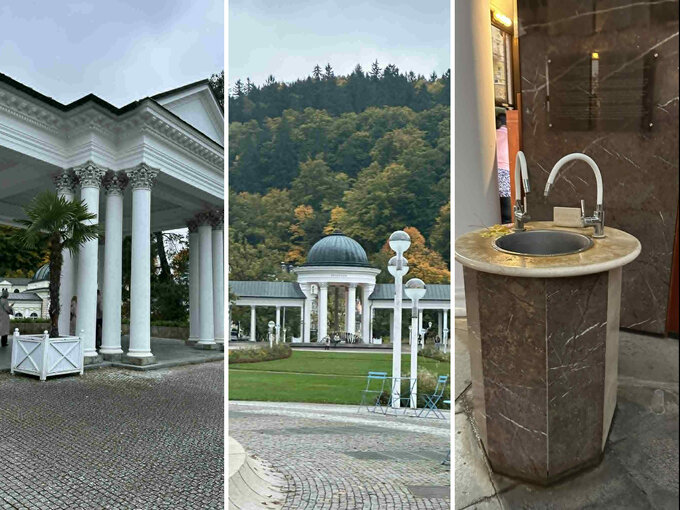
In Marianske Lazne, I start my day with a therapeutic mineral bath in the Alexandra Spring at the Falkensteiner Hotel. This water is characterized by, among other things, a high iron content, free carbon dioxide, and a slightly rusty color. It comes from the local Alexandra Spring and is also available for drinking or inhalation.
In general, Mariánské Lázně offers treatments for digestive, kidney, and urinary tract diseases, as well as circulatory and musculoskeletal disorders . Besides its waters, the place is famous for its peloids (peat), spa gas, and submontane microclimate. There are approximately 160 springs in the area, and over fifty in the city itself ! Treatments using these springs can be enjoyed in the spa houses, while you enjoy the city's charms and walks. I end my day with a dip in the thermal pools available on the hotel grounds.
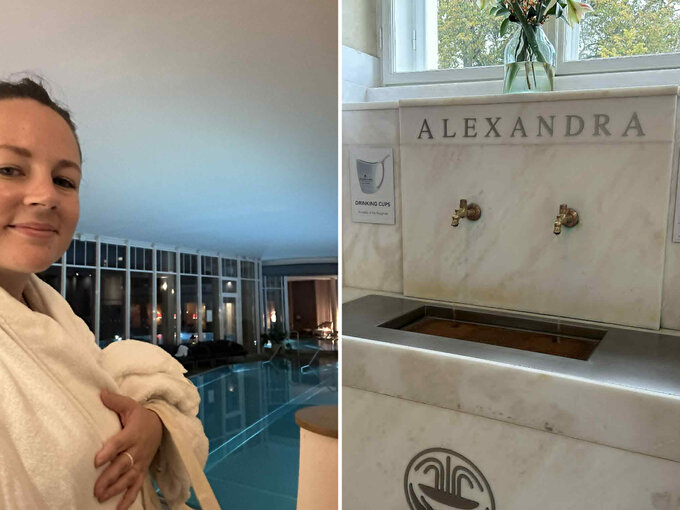
The town, situated on the edge of the Sławkowski Forest, is quiet and peaceful – only 14,000 people live there! It has numerous parks and green spaces, and the houses and tenements are designed in Art Nouveau, Neoclassical, and Neo-Baroque styles. Everything is expansive, elegant, vast, and well-maintained. I couldn't believe how cohesive the buildings are. They make you feel like you're on a movie set or transported back in time. Besides the numerous gazebos, pavilions, and colonnades, I saw the Singing Fountain – it's best to visit in the evening, because then it not only "plays" classical music but is also colorfully illuminated.
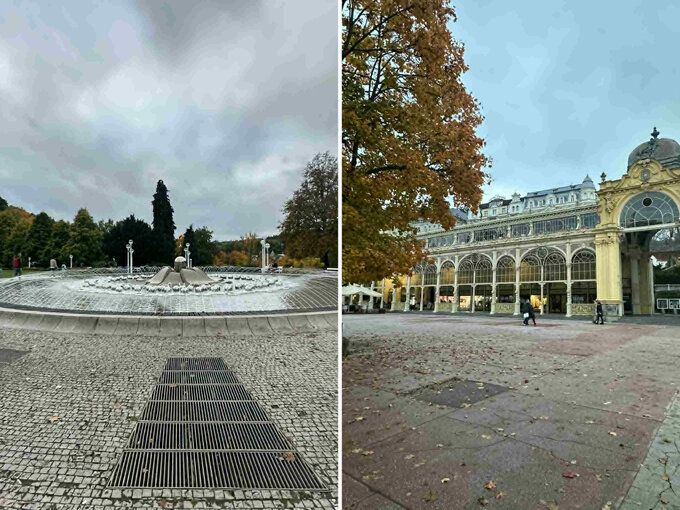
I also visited the main Maxim Gorky Colonnade, the pavilion with the Cross Spring, the Ferdinand Spring, and many others, where there are taps for free drinking of healthy mineral water. I went to the Chopin House, to the original Roman Baths located in the spa center at the Nové Lázně Hotel, and saw numerous monuments.
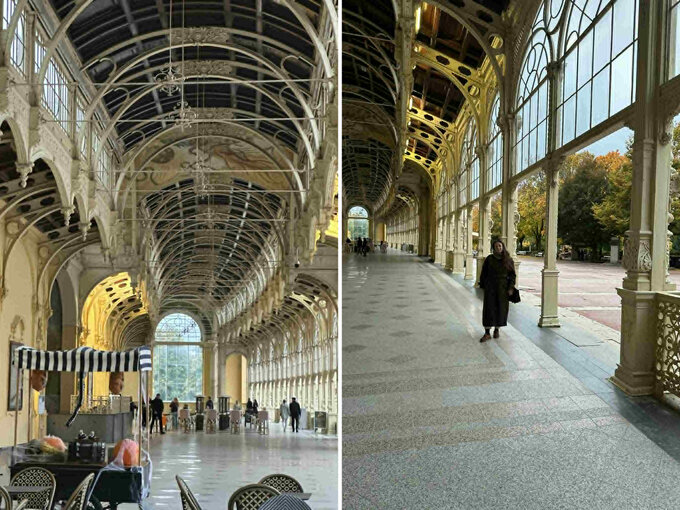
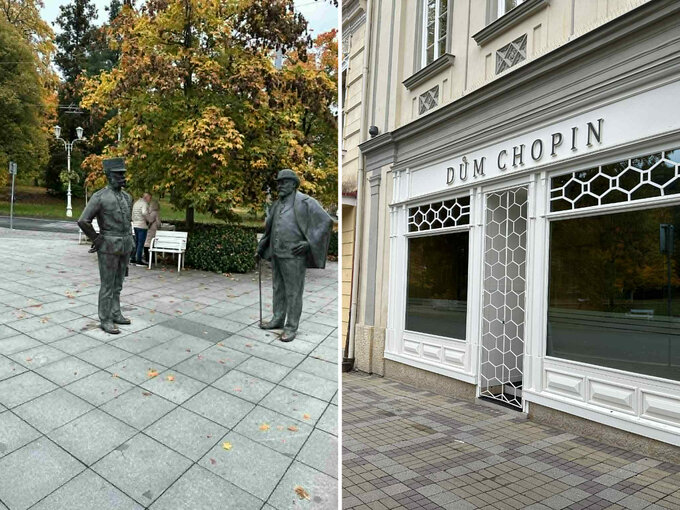
Finally, I tried the famous Kolonada spa wafers. I drank the water from a special cup with a spout, typical of these spas. While in this town, I also had the opportunity to visit the nearby Bečov nad Teplou, with its castle and the reliquary of St. Moor. The surrounding area is so interesting and rich in attractions that it's hard to get bored. Another recommended attraction is the walking trail around Kladská Pond.
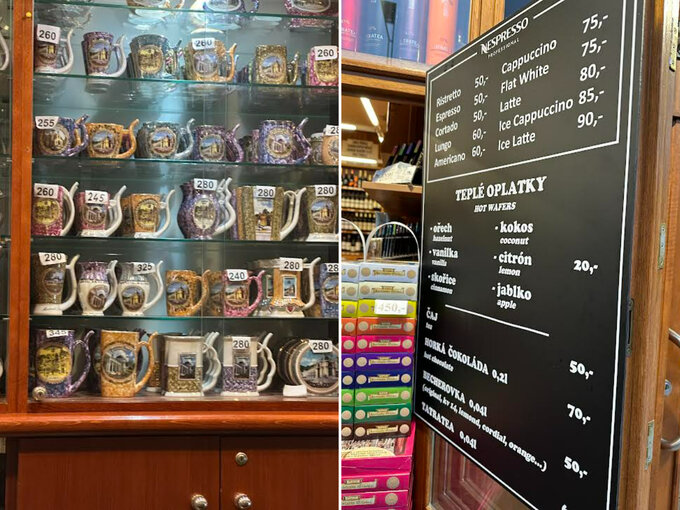
The next stop on my journey is Františkovy Lázně , situated entirely on a peat bog. It's about 35 km from Mariánské Lázně and lies about 5 km northwest of Karlovy Vary. In Františkovy Lázně, I stroll through the local parks, passing a succession of stylistically consistent buildings, marveling at how well these complexes have been preserved over time.
Bliss, uniqueness and other attractionsI get the impression that this is the most intimate of the three places, but that's no surprise, as it turns out this spa town is the smallest. It was supposedly founded in the 18th century. Just because it's a quiet place doesn't mean it doesn't offer a thrill. The town's symbol is a small statue of a boy named Francis, sitting on a ball and holding a fish. It's believed that a woman who touches him will quickly become pregnant.
Another surprising feature in the area is the original meteorological column, considered unique in Europe. Since 1882, spa guests have been able to monitor the conditions that affect their well-being and the weather.
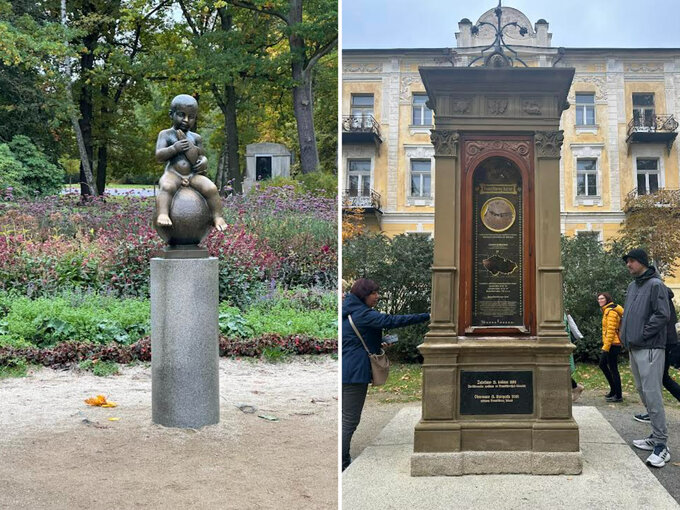
An important landmark and oasis of tranquility is the Aquaforum, with its swimming pools and many other water attractions. In the area, you'll also find nature reserves, castles, and palaces. During my walk, I admired the beautiful promenade, fountains, amphitheater, and monuments, among other attractions. I also found the famous colonnades, beautiful townhouses, vast parks, and, most importantly, healing waters. If local attractions aren't enough for you, you can also visit nearby Loket, with its unique castle.
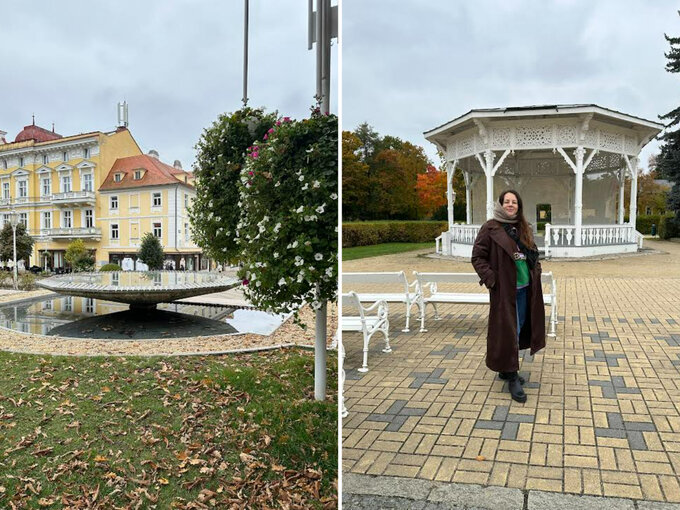
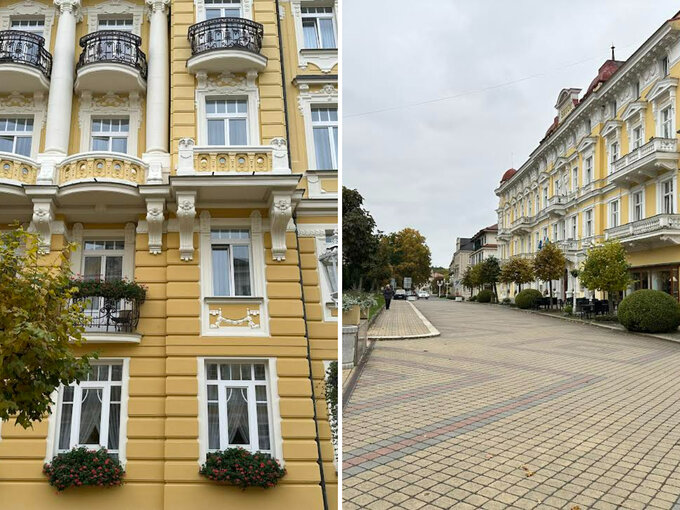
The oldest spring here is the Francis Spring , considered the most powerful. It is named after the Austrian Emperor Francis I. I found it in a beautiful pavilion with Doric columns.
The water is extracted from a depth of 8 meters, and the springs are used in cases of general weakness and mild digestive disorders.
In addition, you'll also find sulphur, salt, and iron springs, as well as Maria's Spring, and others. The area is famous for over twenty mineral springs, including Glauber III, which contains the most minerals in Europe.
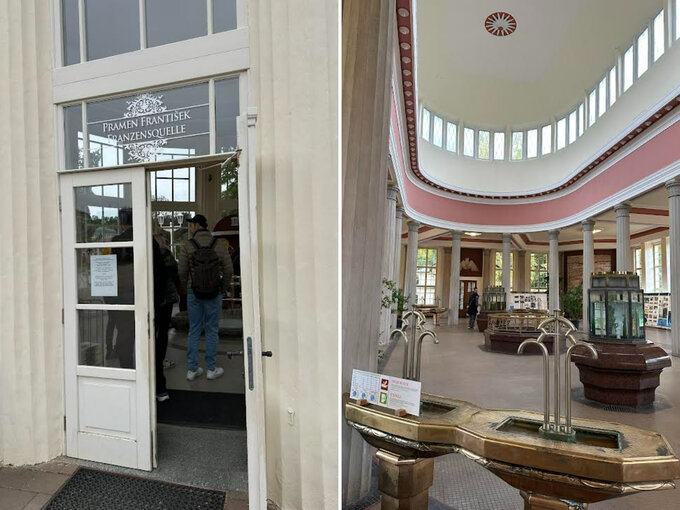
The local healing waters are cold, rich in sulfur, carbon dioxide, and minerals such as magnesium, calcium, iron, and iodine. They are used, among other things , to treat digestive, respiratory, and gynecological ailments, as well as for musculoskeletal rehabilitation . But that's not all. Františkovy Lázně also boasts a world-famous natural therapeutic mud (also available in other spas). It is used to make compresses, baths, and even tampons, which are said to address female ailments.
Majestic Karlovy VaryI stayed in Karlovy Vary (about 48 km from Františkovy Lázně) for another two days. I found myself in an unusual spa town, where the city center is a large enclave almost devoid of cars – many streets are primarily pedestrianized. Once again, I was captivated by the eclectic mix of styles from the turn of the 19th and 20th centuries, including Art Nouveau, Neo-Baroque, Neo-Renaissance, and Neoclassicism. The spa town was founded in the 4th century, but it developed most significantly at the turn of the 20th century. It still attracts artists, among others – the city hosts the prestigious International Film Festival every year.
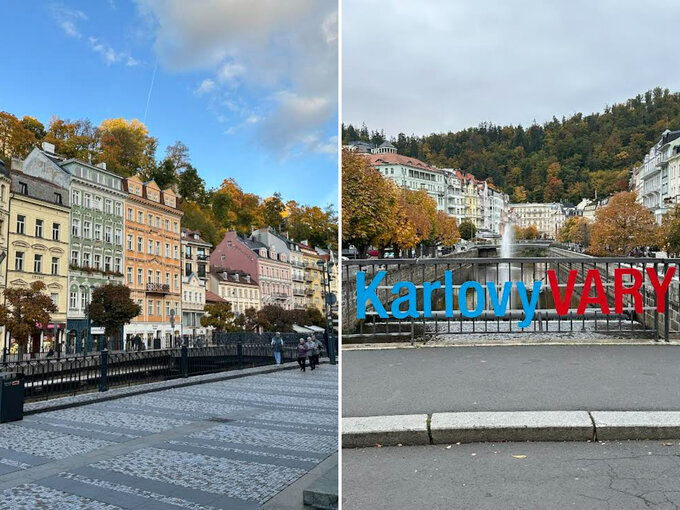
Karlovy Vary is the perfect alternative for those seeking a vibrant spa town with numerous shopping streets and events. One thing's for sure: even if you don't book your accommodation here, you still need to spend at least a day there. This city is unique, completely different from the other two, yet maintaining a nearly identical aesthetic.
Here, I strolled along the Teplá River, rode the Diana cable car to the top of the observation tower, enjoyed thermal pools, and admired the unique hotels. I quickly realized that the city was brimming with luxury, a work of art in itself, yet simultaneously allowed me to connect with nature.
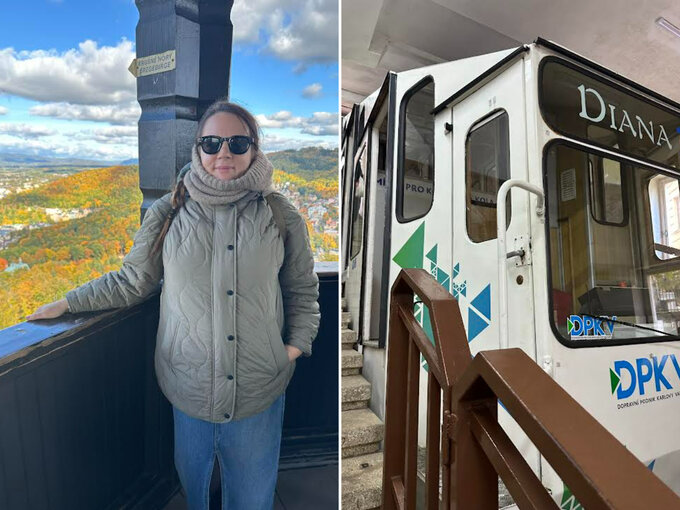
The city's most important landmarks include the Mill Colonnade, the Park Colonnade, and the Market Colonnade . Not to be forgotten are iconic landmarks such as the Grand Hotel Pupp, the Hotel Thermal, the Astoria Hotel, and the Hotel Imperial . Furthermore, the Kaiserbad Spa, a historic spa building also known as the Imperial Spa, now a museum, is truly impressive.
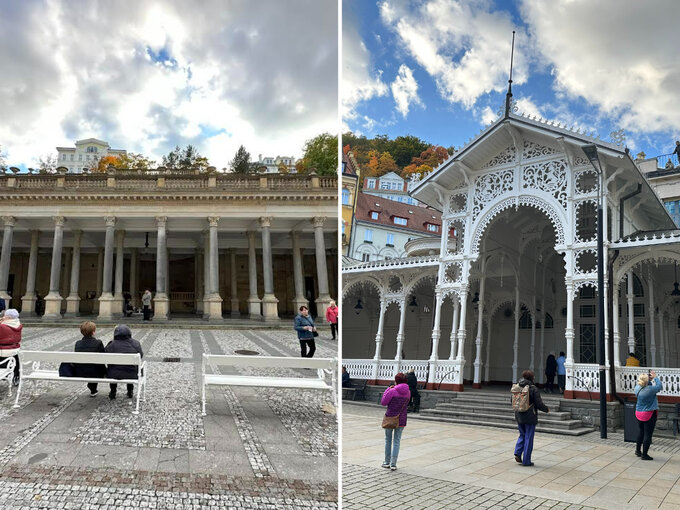
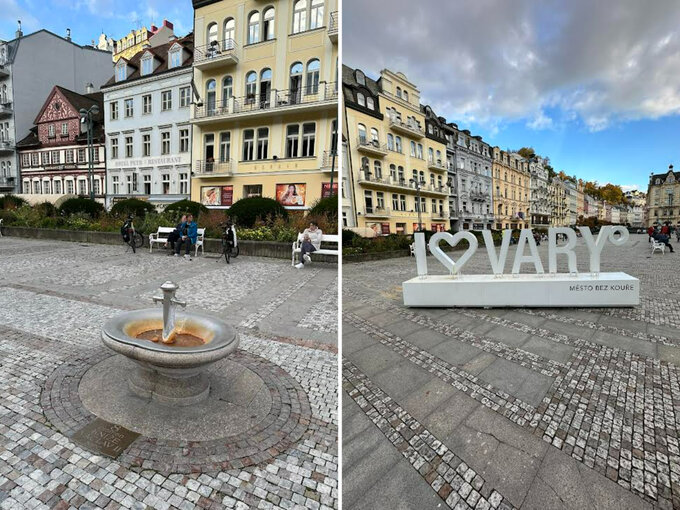
One evening, I had the opportunity to jump into the hot water of the outdoor pools at the Thermal Hotel. The pools are open to everyone, but for a fee, of course. They provide a unique atmosphere. From the water, you admire nature—the trees and the city—from a great height. Peace and quiet reign everywhere. Guests also have access to saunas, among other amenities.
If you're looking for other attractions in the area, you can visit the Moser Glassworks or the Becherówka Museum, among others.
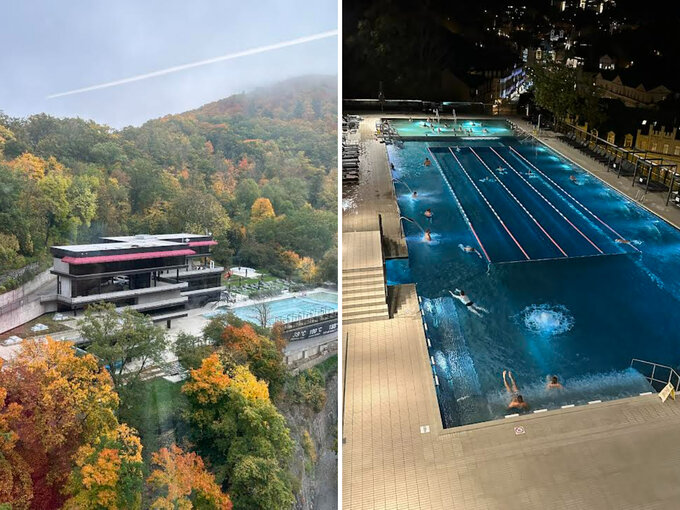
Karlovy Vary stands out not only because it's the largest of the entire spa triangle, but also because it's the only one with natural hot springs . I haven't mentioned the Spring Colonnade yet. It's here that you'll find Vřídlo , the famous geyser from which water at 72°C shoots to a height of 12 meters.
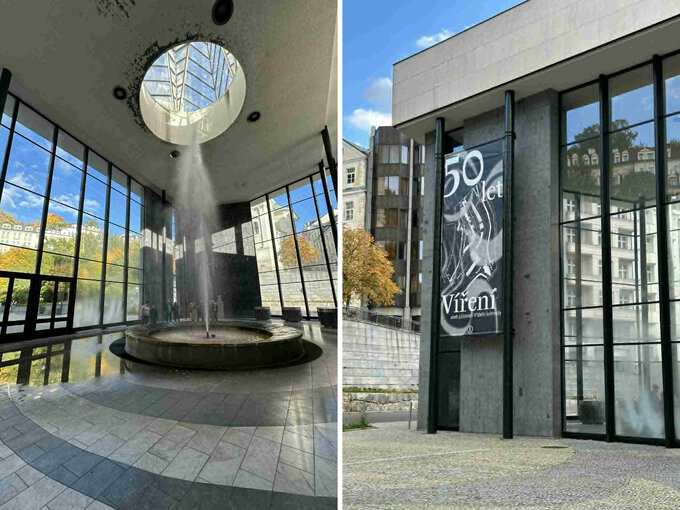
In the aforementioned pavilion, I pass crowds of visitors sipping the healing waters – one must be careful not to get burned. There are 12 main hot mineral springs in this spa, but the total number of springs is much larger, reaching over 80.
Other unique resources in this city include natural gas and mud. Spring water is extracted from 2,500 meters underground and used for numerous treatments.
This is how you get thereI reached Karlovy Vary Region from Warsaw. I took an hour-long flight to Prague, then a less than two-hour bus ride from the airport directly to Marianske Lazne. Everything went smoothly and comfortably. This isn't the only solution, and there's no single perfect option. Much will depend on which region of Poland you want to get there from. For example, by car from Wrocław, you can get there in 5.5 hours, and from Krakow in 7.5 hours. Another option is to take the train to Prague and then transfer to a local transport option, such as Františkovy Lázně.
Are these spas for everyone? Those who enjoy exploring the world, those who don't shy away from longer journeys abroad, and those who don't want to learn a foreign language will certainly feel at home during such a trip. These are also cities for fans of luxury, art, nature, and exceptional architecture. Those struggling with ailments that require local treatment will particularly benefit.
It's also worth noting that these spas don't have the same party atmosphere as in Poland. Dancing is common, but it's not a regular occurrence. You'll likely forget about the so-called "fafa" parties from Ciechocinek. What matters most is regeneration.
You have to be prepared for slightly higher prices than in Poland, especially in Karlovy Vary, although you can also find promotional offers.
The text was written as part of a press trip organized by CzechTourism.Read also: This spa town enchanted me. Beautiful mountain peaks are just the beginning. Read also: I took the train to the spa town. Here, I found peace and tranquility in the heart of the Beskid Mountains.
Wprost


